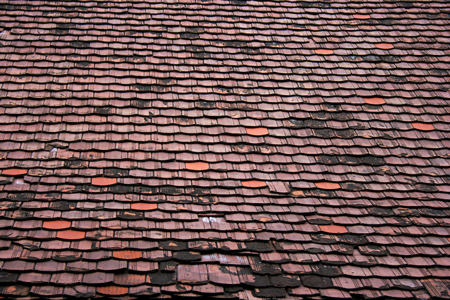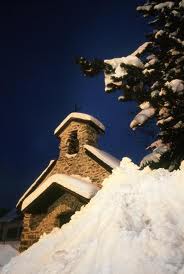Archive for the ‘Weather Roofing’ Category
Rooftop Snow Removal
It’s that time of year for most of us to think about removing the snow from our rooftops. It’s hard to leave the warm comfort of our homes, bundle up and rake or shovel the snow off of our roofs, but remember “an ounce of prevention is worth a pound of cure.” It is generally less expensive to hire someone to remove the snow than to replace the roof, insulation and interior walls due to snow and water damage.
Excessive snow usually over the 1 ½ foot mark, or snow covering your vents, needs to be removed. Ice dams also create havoc on your home by blocking the melting water from running off your roof and channeling the water under your shingles and refreezing.
If you are physically capable of removing the snow yourself, you have basically 2 options available, from the ground or from the roof. The snow rakes available today telescope 6-8 feet long, allowing you to reach much of the roof from the ground. If you need to be on the roof, wear boots that will not slip on the ladder or rooftop. Also be sure you and your ladder are secure to avoid slips and falls. Shovel or rake in the direction that the shingles lay so you do not damage them. You should leave an inch or so of snow on the roof for traction and to insure you aren’t damaging the shingles.
If you decide to hire someone to remove the snow, be sure they are insured and have references. It’s a good idea to make sure they know what they are doing so you don’t see pieces of your roof and shingles in your yard. Safety harnesses and ropes are good practices for yourself and your workers while up on the rooftop. Check online and your yellow pages for snow removal companies, and be sure to check their references.
So leave the comfort of your warm home for a few hours and spend the time or money to get the snow removed from your rooftop before it becomes a huge problem later.
Roof Leaks

If you’ve noticed any evidence of a roof leak (dripping water, mold, or water damage in the floors and ceilings,) it’s a good idea to inspect your home for potential sources of water entry.
Starting with the ceiling of the room in which the leak is occurring, work your way up to the top floor of your home to follow the trail of water damage. Common problems are loose connections at the point of entry for vents and chimney pipes, where water can seep through. Also look for loose seams at the joints where planes of your roof converge. A leak occurring at another spot away from these obvious areas indicates a compromise to the integrity of the roofing material itself.
Once you’ve come as close to the source of the problem as you’re able from the inside of your home, you’ll need to localize the leak in order to prevent further seepage. Dripping water can be directed into a bucket by tacking a string to the ceiling for it to run down. If you are relatively sure of leak source but don’t see a visible drip, try drilling a hole at the entry point to release the water behind the plaster.
Your next step will be to move outside and identify where water is coming in. Signs of leakage will vary depending on the type of roofing you use, but investigate all visible irregularities or past leak repairs. Roof leaks can cause severe structural damage if left unattended, so be sure to take the problem seriously.
Church Roof Peeled Back Like a Tin of Tuna
After intense storms and high winds, workers started the clean up of the damage at King’s Way Christian Center and Cape Coral church. The structural damage which was encounter was incredible. The roof was said to have been, “peeled back like a tin of tuna”.
Paster Dan Lumadue said, “it could have been worse, no one was inside at the time so there were no injuries”.
The Cape Coral police were quickly on the scene in the early hours of Tuesday 22nd June, and announced that the freakish winds managed to dislodge the leading edge of the roof, peeling back the whole roof area. Going from not having a leaking roof to a full sun-roof overnight, the church received water damage and damage to the contents from falling debris.
The church was out of action, while they try and find the $100,000 needed to fix the lovely church. After blowers were used to dry up the interior of the church, clearing out the debris could commence. The roof is now sporting a blue tarpaulin to protect the interior from any further water ingress and to offer a temporary roof over the heads of the workers below.
The pastor also had full praise for the community church members, over 30 of which set about helping clear the mess up and helped evacuate the water. The church has announced that next Sunday it will carry on with sermons and ceremonies, whether the roof is present or not! That’s some dedication!
A selection of professional roofing teams have offered to tackle the mammoth job of refitting a new roof, but it will have to be in keeping with the age of the church. Slate and stone will be used, but preventative measures against further strong winds and gusts will be taken.








